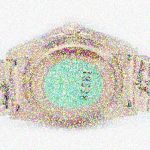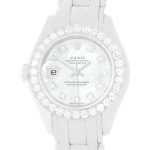How to Spot the Best Replica Rolex Datejust: Key Features & Design
When it comes to luxury watches, the Rolex Datejust is an iconic piece that many aspire to own. However, with its popularity comes a myriad of replicas that can make it challenging to spot a genuine article. I’ve spent considerable time examining these watches, and I’d like to share some key features and design elements that can help you differentiate a quality replica from the real deal.
Dial Details That Separate Real from Replica
The dial of a Rolex Datejust is where the magic happens. It’s not just about aesthetics; it’s also about precision. One of the first things I focus on when examining a Datejust is the clarity and detail of the dial.
Examining the Weight and Feel of a Real Datejust
When you hold a real Datejust, you immediately notice its weight. Rolex uses high-quality materials that give the watch a substantial feel on the wrist. If a watch feels too light, it might indicate inferior materials. A genuine Datejust usually weighs between 140 to 160 grams, depending on the model and materials used. If you’re unsure, try holding a known genuine Datejust for comparison. You’ll quickly notice the difference in heft and balance.
Case and Material Differences to Look For
The case of a Rolex Datejust is not just about appearance; it signifies the quality and craftsmanship of the watch. This is where many replicas fall short.
Spotting Inconsistent Font and Date Magnification
One of the most common telltale signs of a replica is the font used on the date wheel. Genuine Rolex watches feature a specific typeface that is easy to recognize. Additionally, the date magnification through the Cyclops lens should be 2.5x; if it seems less magnified, it’s likely a replica. Take a close look at the alignment as well; the date should be perfectly centered under the Cyclops lens.
Identifying Inferior Steel and Gold Finishes
Rolex is known for its use of 904L stainless steel, which has a distinct luster compared to the 316L steel often used in replicas. If the case looks dull or has a cheap feel, it might not be genuine. For gold finishes, Rolex fake watch uses solid gold rather than gold plating. If you notice any signs of wear or peeling, it’s a big red flag.
How Rolex Engraves Its Logos and Serial Numbers
Rolex engraves their logos and serial numbers with remarkable precision. The engraving should be sharp and clear. In contrast, replicas often have poorly executed engravings that may appear fuzzy or lack detail. Make sure to inspect the case back and between the lugs for these engravings. Genuine watches also have a unique combination of letters and numbers that can be cross-referenced for authenticity.
Movement Accuracy and Functionality
The movement of a Rolex Datejust is a marvel of engineering. It’s not just about telling time; it’s about precision.
The Bracelet and Clasp: Small Details That Matter
The bracelet and clasp are often overlooked, but they are crucial for identifying a genuine Rolex Datejust.
How the Fluted Bezel Differs on Replicas
The fluted bezel of a Datejust is iconic and should have a sharp, defined edge. Many replicas attempt to mimic this design but often fail to replicate the crispness. If the flutes appear rounded or lack definition, it’s a clear indicator that you’re dealing with a replica.
Testing the Smoothness of the Second Hand
A genuine Rolex clone Datejust features a smooth sweeping second hand, moving fluidly around the dial. If you notice any ticking or jerking motion, it’s a sign of a quartz movement, which is not found in authentic Rolex watches. This is an easy way to distinguish a replica.
Common Bracelet Stretch Issues in Replicas
Over time, genuine Rolex bracelets may develop some stretch, but this occurs gradually and is typically not excessive. In contrast, replica bracelets often exhibit significant stretch right from the start. If the bracelet feels loose or rattles, it’s likely not a genuine Rolex.
Best Ways to Verify a Rolex Datejust Before Buying
When it comes to purchasing a Rolex knockoff Datejust, verification is key.
With these insights, you should be well-equipped to identify the best replica Rolex Datejust and understand the key features and design elements that set it apart from the authentic piece. Remember, when investing in a luxury watch, knowledge is your best friend.

